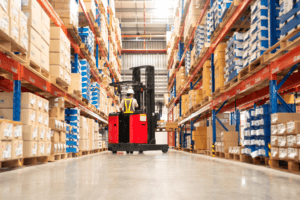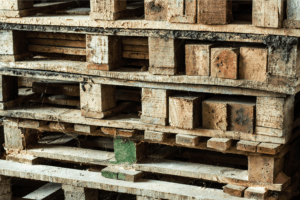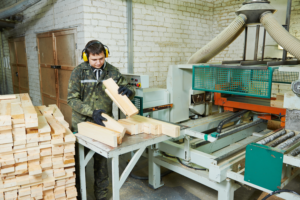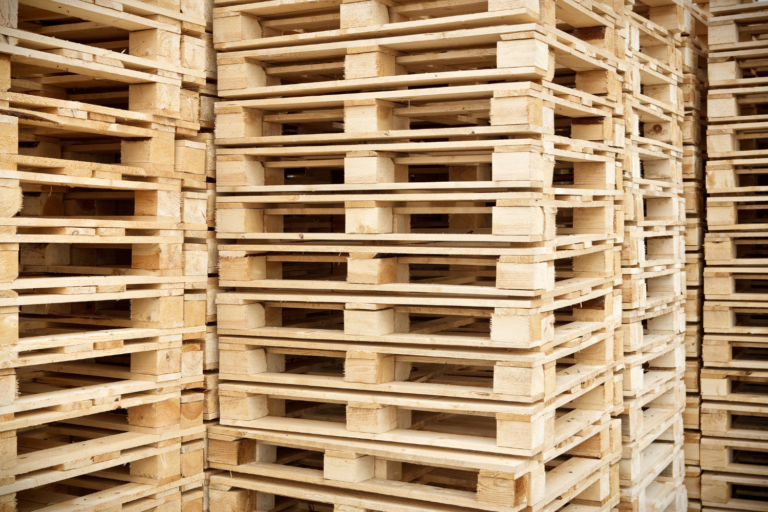A pallet shortage can be a significant challenge if you are reliant on efficient logistics and supply chains.
As demand for goods rises, so does the need for pallets. It creates competition for available resources.
This demand surge often coincides with limited raw materials, high lumber costs, labor shortages, and rising transportation expenses.
There are more reasons why a pallet shortage occurs. Let us talk about them below before we discuss how to manage a pallet shortage.
7 Common Causes of a Pallet Shortage
The factors below create a cumulative strain on pallet availability, leading to shortages and impacting supply chain efficiency.

1. Higher Demand for Goods Leads to Increased Demand for Pallets
As consumer demand increases, so does the need for transporting and storing products, which drives up the demand for pallets.
For example, during peak shopping seasons like holidays or back-to-school times, retailers increase inventory to meet anticipated demand.
Similarly, during economic growth or times of recovery from disruptions like post-pandemic periods, both consumers and businesses boost their purchasing.
Pallets are essential in this process since they provide a standardized, efficient way to move large quantities of products.
When pallet manufacturers struggle to keep up with this surge in demand, it can lead to shortages.
2. Limited Availability of Raw Materials Due to Factors Like Deforestation and Reduced Logging
Wooden pallets in particular rely on a steady supply of lumber, but access to this raw material has become increasingly limited.
In many regions, regulations have been put in place to protect forests and reduce logging, making it challenging for lumber companies to meet high demand.
Additionally, as forests are depleted, it becomes harder to source high-quality wood at reasonable prices, further limiting production.
The lumber industry is also affected by environmental challenges like wildfires, drought, and insect infestations that reduce tree populations.
3. Rising Costs of Lumber Make It More Expensive to Produce Wooden Pallets
In recent years, the price of lumber has fluctuated significantly due to various factors, including tariffs, natural disasters, and rising demand in construction and home improvement sectors.
Higher lumber prices increase the cost of pallet production, making it more expensive for manufacturers to produce the same quantity of pallets.
This added expense often forces them to cut back on production or pass on costs to customers, which can slow down demand.
When companies hesitate to buy new pallets due to high prices, they may turn to reusing existing ones for longer periods, reducing the flow of pallets within the supply chain.
In severe cases, these high costs may discourage pallet production entirely, contributing to a limited supply and a more constrained availability of pallets.

4. Shortages of Truck Drivers and Increased Transportation Costs Can Delay Pallet Deliveries
The logistics industry has been grappling with a shortage of truck drivers, which has become a significant bottleneck for pallet distribution.
Compounding this issue are increased transportation costs, driven by rising fuel prices, new regulations, and the need for logistical adjustments.
This driver shortage and increased cost create delays that slow the turnover rate of pallets.
Without efficient transport, pallets remain stuck at distribution centers or warehouses, unavailable for reuse or redistribution to meet demand in other parts of the supply chain.
5. Businesses Holding Onto Inventory Longer to Avoid Stockouts Can Reduce the Availability of Pallets for Reuse
During periods of supply chain uncertainty, businesses often react by holding onto more inventory to avoid potential stockouts.
Keeping additional stock on hand means using pallets to store those goods for longer periods, leading to fewer pallets being released back into circulation.
In some cases, companies might even choose to keep entire pallet loads stored as backup inventory, further tying up pallets that could otherwise be in active use.
This practice of stockpiling inventory, while understandable, limits the availability of pallets in the market and disrupts the supply chain.
6. Increased Damage to Pallets and Delays in Repair or Refurbishment Can Reduce the Available Pallet Pool
Pallets are regularly subjected to wear and tear, and high demand only accelerates the rate at which they become damaged.
When pallets are damaged, they are removed from circulation for repair or refurbishment, which can take time and resources.
If companies face shortages in labor, tools, or materials needed for repair, the process can become significantly delayed, and these damaged pallets remain unusable.
7. Pests Can Damage Pallets and Reduce Their Availability
Wooden pallets are vulnerable to pests, including termites, beetles, and other insects, which can infest and damage the wood, rendering the pallets unsuitable for use.
Infested pallets often need to be disposed of, as regulations prevent their continued use, especially for shipments crossing international borders.
Additionally, measures to control and prevent pest infestations, such as fumigation or heat treatment, add costs and time to the pallet preparation process.
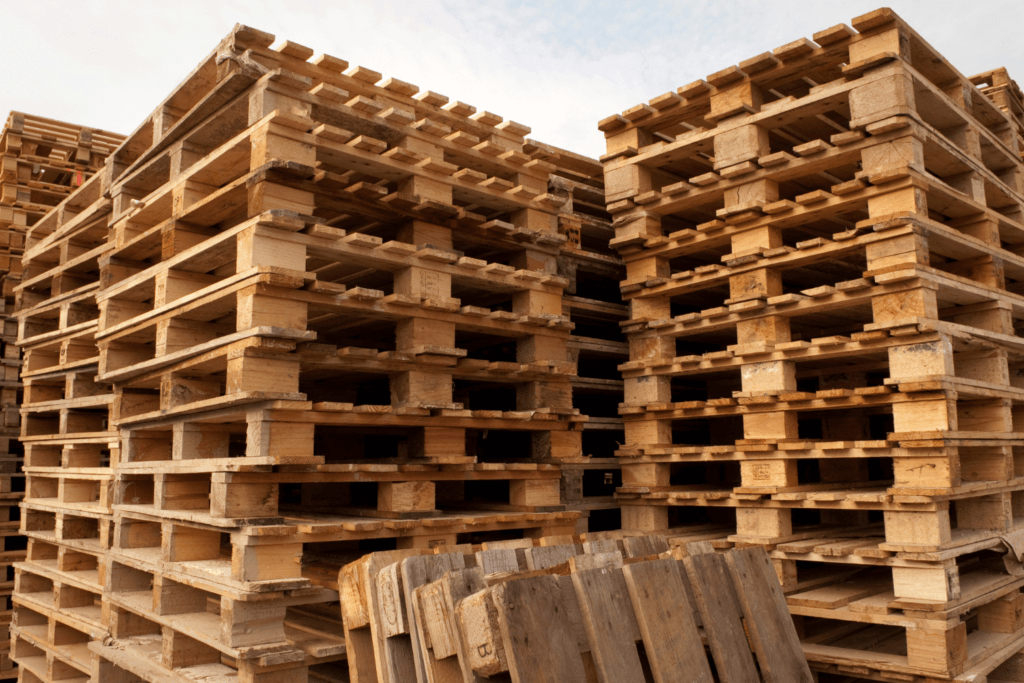
How to Manage a Pallet Shortage Effectively
You can take a proactive approach by employing the strategies below to effectively manage a pallet shortage.
Each strategy not only helps maximize the use of available pallets but also minimizes the impact of disruptions in supply chains.
1. Use Space-Efficient Stacking Methods to Make the Most of Available Pallets
You can maximize your pallet usage by implementing space-efficient stacking techniques, such as double-stacking or block stacking.
You can also consider reconfiguring your storage areas or investing in racking systems that allow for vertical stacking, further expanding capacity.
Training employees on proper stacking methods and load stability techniques is crucial, as it ensures pallets are used safely and efficiently.
2. Use Tracking Systems to Monitor Pallet Movements and Prevent Loss and Theft
Pallet tracking systems, such as RFID tags, GPS trackers, or barcode scanning, help you monitor the movement of pallets throughout your supply chain.
These systems provide real-time insights into pallet locations and movements, so you can detect missing pallets quickly and prevent loss.
They also help streamline pallet return processes by enabling you to identify when and where pallets are being held longer than expected.
3. Regularly Conduct Pallet Audits to Identify and Address Inefficiencies
Conducting regular pallet audits involves examining all aspects of pallet usage to identify any inefficiencies, damage, or areas where improvements can be made.
It helps you spot trends in pallet damage or loss, which can then be addressed to extend pallet life.
For instance, if pallets are frequently damaged during certain handling processes, implementing specific training for employees or investing in better handling equipment may reduce future damage.
4. Establish Relationships with Multiple Suppliers to Avoid Reliance on a Single Source
Relying on a single pallet supplier can be risky, especially during times of high demand or industry-wide shortages.
Establish relationships with multiple suppliers to ensure that you have alternative sources if one supplier faces delays or is unable to fulfill orders.
You may even consider suppliers in different regions or those specializing in alternative pallet materials, such as plastic or metal, to expand your pallet sourcing options.
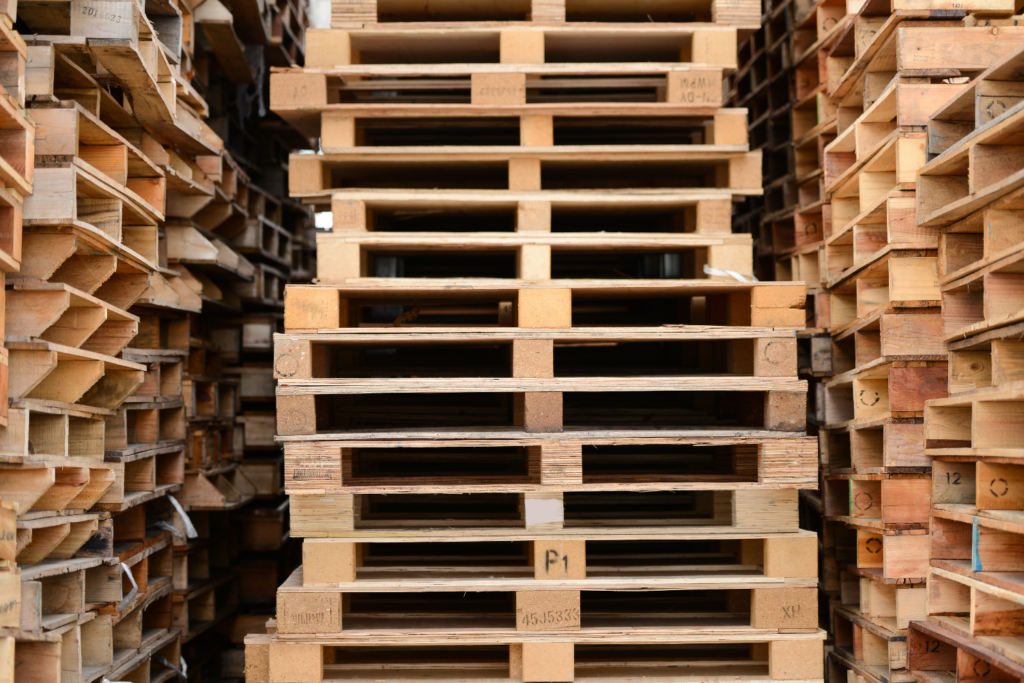
5. Maintain a Buffer Stock of Pallets to Cover Unexpected Shortages
A buffer stock can be especially useful if you have seasonal fluctuations in demand or are affected by irregular supply chains.
To manage buffer stocks effectively, calculate the optimal number of pallets needed based on historical usage, lead times, and risk assessments of potential disruptions.
They should be monitored regularly to ensure pallets remain in good condition and are rotated in and out of use as needed.
6. Partner with Other Companies to Share Pallets and Optimize Transportation
Collaborative logistics, such as pallet sharing or pooling programs, allow you to share a common pool of pallets with other companies, which are returned, cleaned, and redistributed as needed.
Sharing pallets reduces redundancy, lowers costs, and allows for faster pallet turnover. It also reduces the environmental impact associated with producing new pallets.
You can collaborate through formal pooling programs managed by third-party providers, who handle pallet distribution, maintenance, and tracking.
7. Leverage Data Analytics to Forecast Pallet Needs and Manage Inventory Effectively
You can anticipate future pallet needs based on historical demand, market trends, and seasonal fluctuations with data analytics tools.
Advanced forecasting models can take into account variables like upcoming product launches, anticipated changes in demand, or disruptions in supply chains.
These insights can be used to streamline operations, adjust pallet procurement schedules, and ultimately ensure pallets are available when needed.
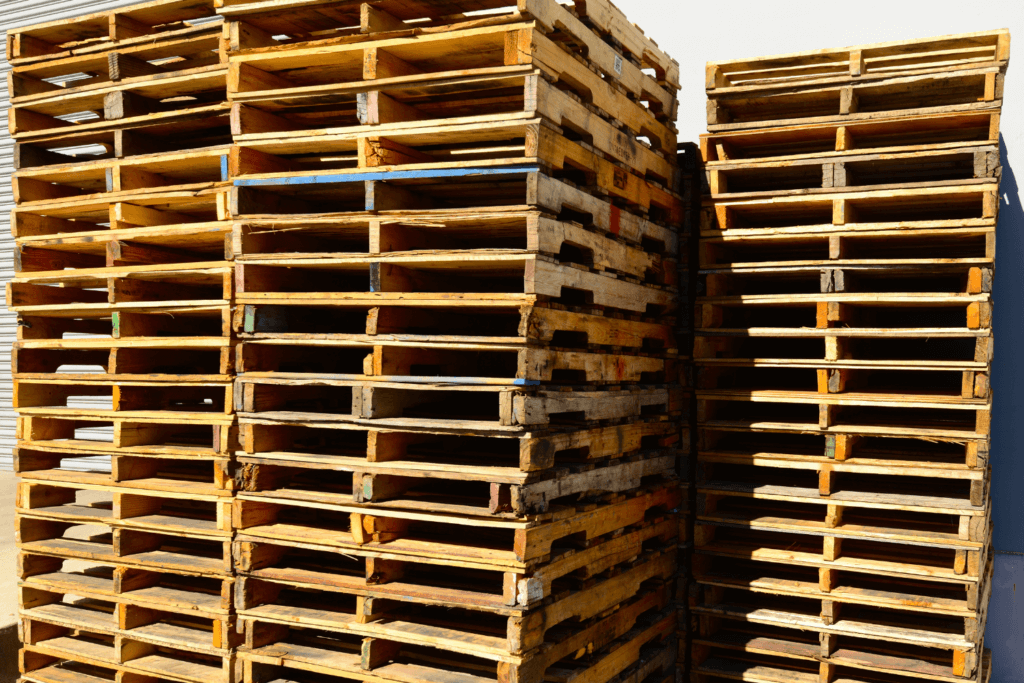
Conclusion
Managing a pallet shortage effectively requires a proactive, multi-faceted approach.
Optimizing existing resources, establishing flexible sourcing, and leveraging data to anticipate needs are key components of a successful strategy.
These measures not only reduce the immediate impact of shortages but also create a more resilient, adaptive supply chain.
If you need a steady supply of high-quality pallets, check out our pallet products here.
Chesapeake Pallets has been helping companies across the United States level up their logistics, one pallet at a time.
For inquiries, email info@chesapeakepallets.com or request a quote below!


